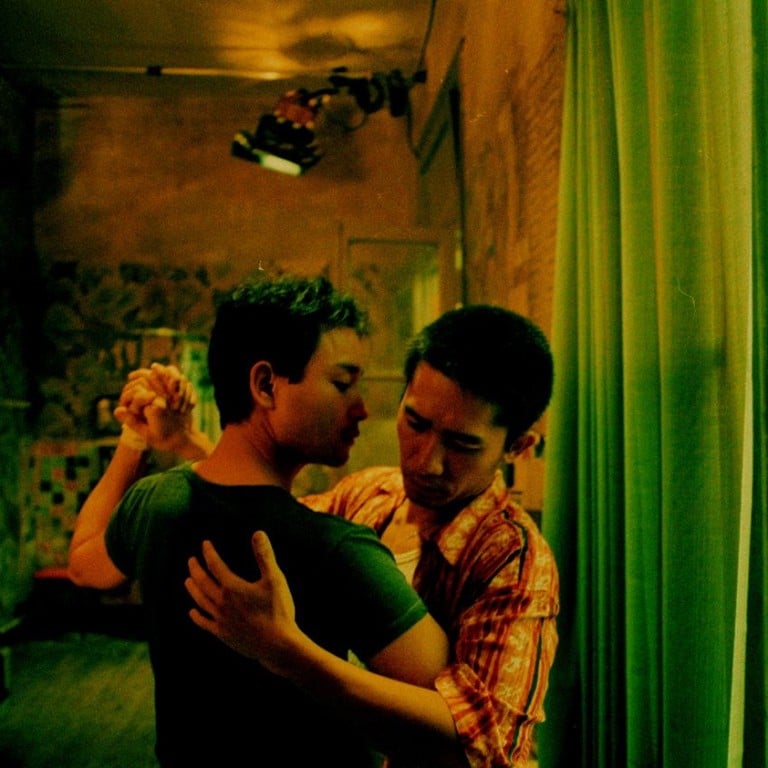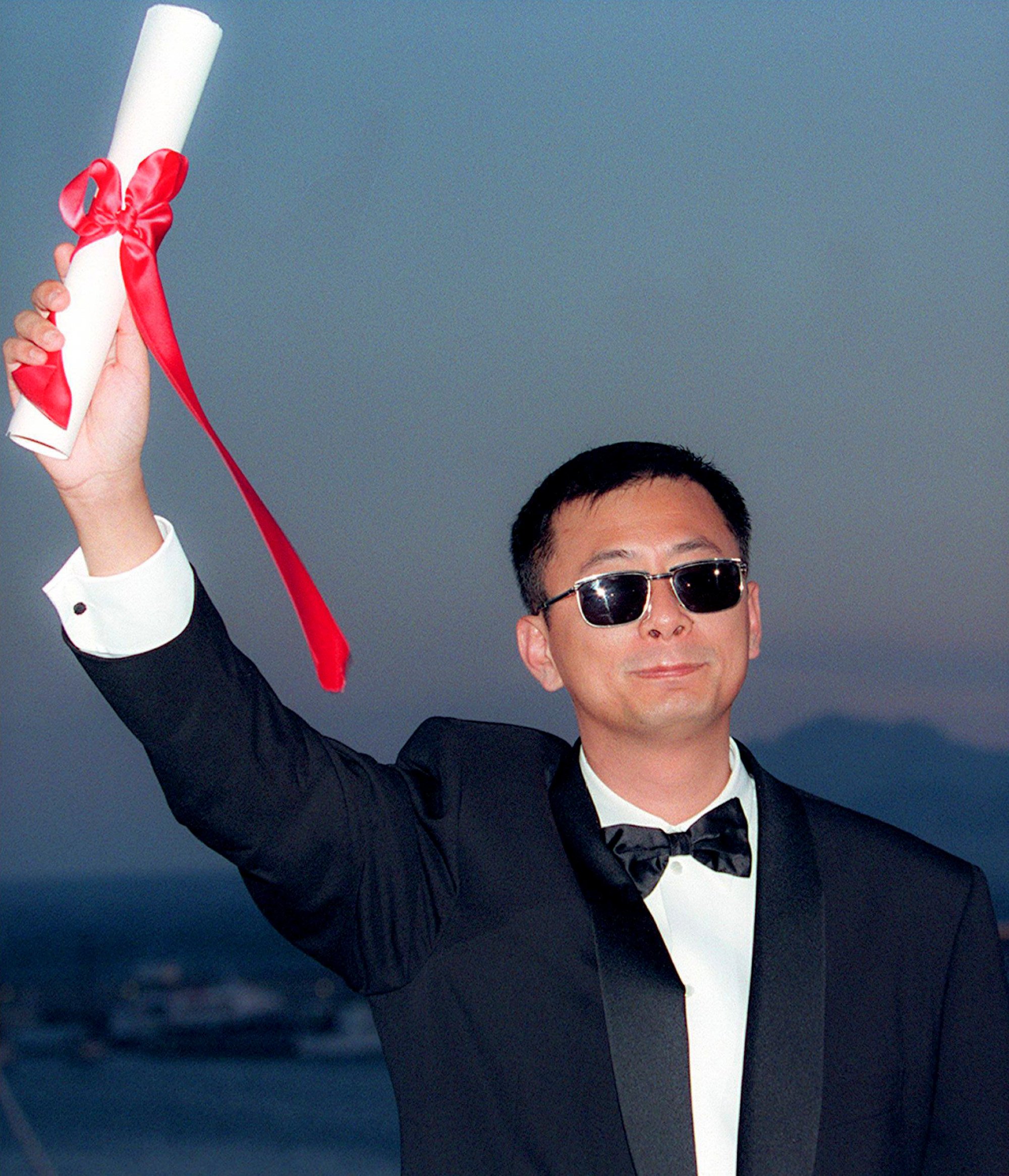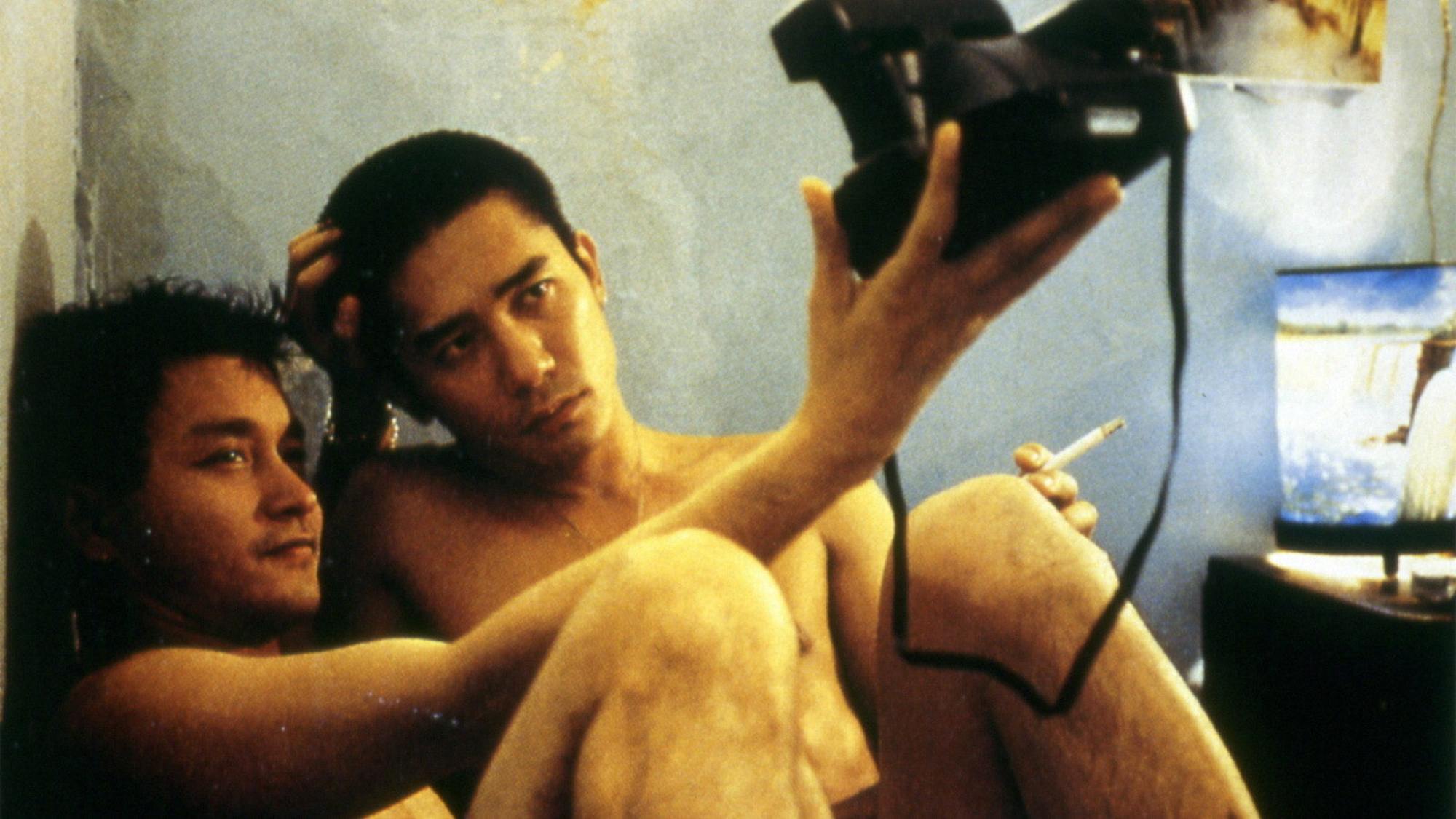
Classic Hong Kong movie Happy Together, 25 years on: Wong Kar-wai on his Cannes-winning gay romance, starring Leslie Cheung and Tony Leung
- Happy Together was a Hong Kong story set in Argentina, Wong said, but had little in common with the gay-themed films that were starting to appear in the city
- Tony Leung was thrown by the sex scene he had to perform, worried about what his mother would think. He did the scene, but demanded he kept his underwear on
On May 17, 1997, Wong Kar-wai’s Happy Together premiered at the Cannes Film Festival. Released in Hong Kong cinemas right before the handover from Britain to China, the film charts the demise of the relationship of a gay couple who have relocated from Hong Kong to Argentina.
As the director mentioned in an interview with this writer just before the film’s debut at Cannes in 1997, there are some surprises. The colours slide from black and white into a burnished, saturated look, and one scene is even shot upside-down.
Wong won the prize for Best Director at Cannes, but he was less fortunate at home, where the opening sex scene between Leung and Cheung garnered the film a category III certificate, severely limited its audience. Wong later said he could have re-cut the film to avoid the rating, but didn’t want to compromise its integrity.
Back in 1997, Wong’s style was the most talked-about aspect of his work, and the previous year had seen a stream of Hong Kong films copying his handheld camerawork, slow-motion punctuation marks and philosophical voice-overs.
Abroad, critics were praising his idiosyncratic portrayals of urban isolation, his fragmented narratives, and his willingness to take technical risks, although he had not reached the level of fame that In the Mood for Love would bring him.
Every Wong Kar-wai feature film ranked, in order of greatness
Happy Together was the first film Wong shot outside Asia. It was inspired by the novel Buenos Aires Affair by Argentinian writer Manuel Puig, then a favourite author of the director, but Wong’s primary motivation was to shoot a film as far away from Hong Kong as possible.
Part of this was down to the fact that everyone outside Hong Kong thought that directors were eager to make films that addressed the 1997 handover, not realising that the hardcore commercial nature of the local industry in the 1990s meant that political films were rare.
“I did a lot of interviews over the last two years for Chungking Express and Fallen Angels, and everyone was asking me about 1997,” Wong said in the 1997 interview, while he was cutting Happy Together down from four hours to 98 minutes for its Cannes premiere.

“As everyone was expecting me to say something about 1997 in my next film, I decided to run away to a country I had never seen before,” he said. Wong did later address 1997, in his own way, with 2046, released in 2004.
The director decided to change the title of Puig’s novel because the script, which he wrote himself, had nothing to do with the original storyline. He also wanted to shift the focus away from the city – he said he didn’t want to make a film about Argentina, and that the finished film would more represent a vision of Hong Kong relocated to another country.
Wong arrived in Argentina with a two-page synopsis which he felt would easily translate into a full film. But as soon as the shoot started, he realised that his original story was not the one that he wanted to tell. Far from home, he said he struggled to find the plot as the shoot was taking place.

“The story is very simple, much more so than my previous films. It’s about two gay men who want to renew their relationship. So they go to the farthest place on Earth from Hong Kong – South America. Then, they separate and they want to start all over again,” he said.
“I’ve limited the action to two to three people and I’ve tried not to use a lot of voice-over. The first half is straightforward and linear. But the second part becomes more reflective, more Wong Kar-wai.”

Wong said that although Happy Together revolved around a homosexual affair, it had little in common with the gay-themed films that were starting to appear in Hong Kong, like Shu Kei’s A Gay Story. Wong’s Happy Together was a love story about two gay men, but it did not look into identity issues or discrimination.
“I don’t want to call it a gay film, as the story could happen between any two people – a man and a woman, or a woman and another woman. It’s just that in this film, it happens between two men,” he said.
Besides Wong regulars Cheung and Leung, the film also features Taiwanese actor Chang Chen. Wong said that he generally liked to write characters which reflected the personality of the actors, and noted that Cheung drew heavily on himself for the role.
The Asian movies premiering at the Cannes Film Festival 2022
Leung, however, was thrown by the sex scene he had to perform with Cheung, and was worried about what his mother would think. He ultimately did the scene, but demanded that he kept his underwear on. Leung went on to win the best actor prize at the Hong Kong Film Awards the following year.
“Leslie and Tony have great chemistry together. I wanted to focus on this and that’s why I decided to make it a love story between them,” Wong said.

“As we were still working in very small spaces in Argentina, we again used a handheld camera. But we’ve done something different. So many of the films in Hong Kong and Taiwan have copied the style of Chungking Express and Fallen Angels, we thought we should do something new,” he said.
The film was shot in the Boca neighbourhood of Buenos Aires. The area was not safe, and the film crew were often asked for protection money, threatened with guns and, if they shot in the wrong locations, even with bombs. But Wong was not daunted, noting some similarities with triad areas in Hong Kong, like Mong Kok in Kowloon.
“This neighbourhood is the most dangerous part of Buenos Aires. You can easily get killed there. But it’s a very familiar atmosphere for us, as it reminds me of Mong Kok and Kowloon City. We didn’t have a lot of real problems, even though there were a lot of guys with guns asking us for money. Actually, we all became friends in the end,” he said.

Although set in Argentina, Wong said that Happy Together was still very much a Hong Kong story. “Somehow we constructed a Hong Kong in Buenos Aires. Deep down in your heart, what you care about is the place where you live. At the end of the story, the film can still be applied to Hong Kong today. It’s very strange.”
